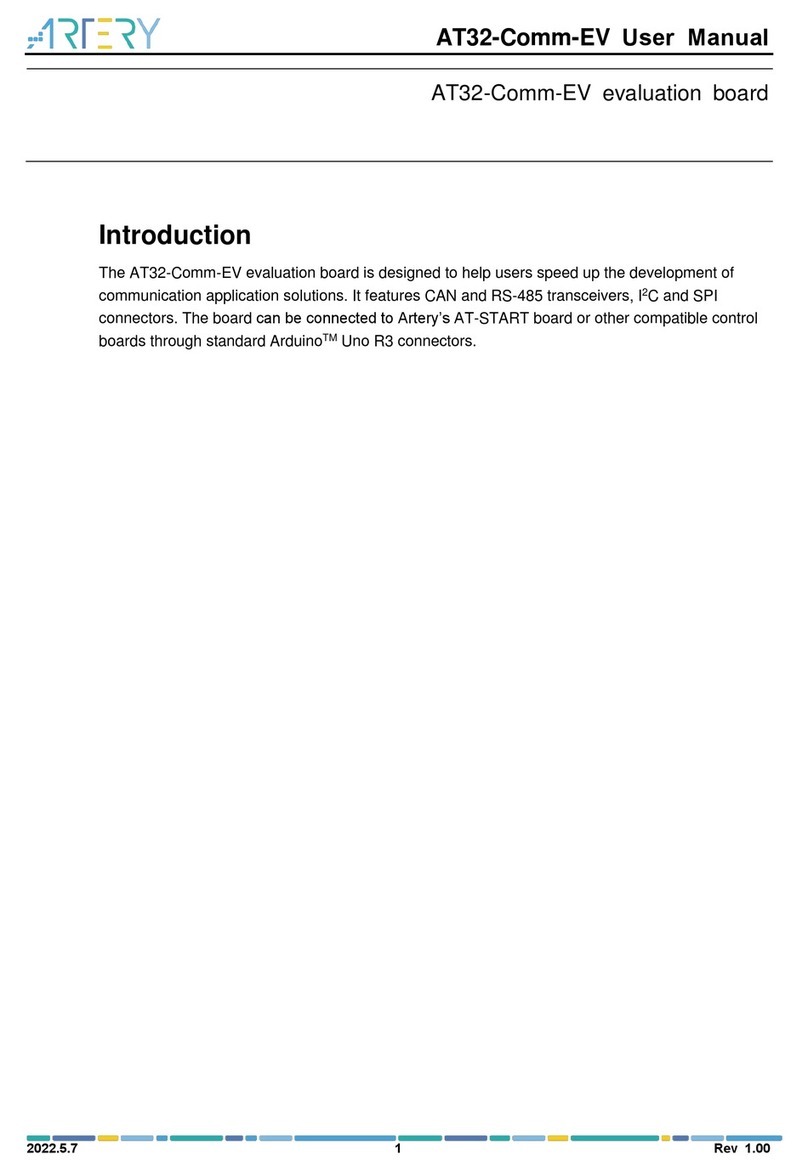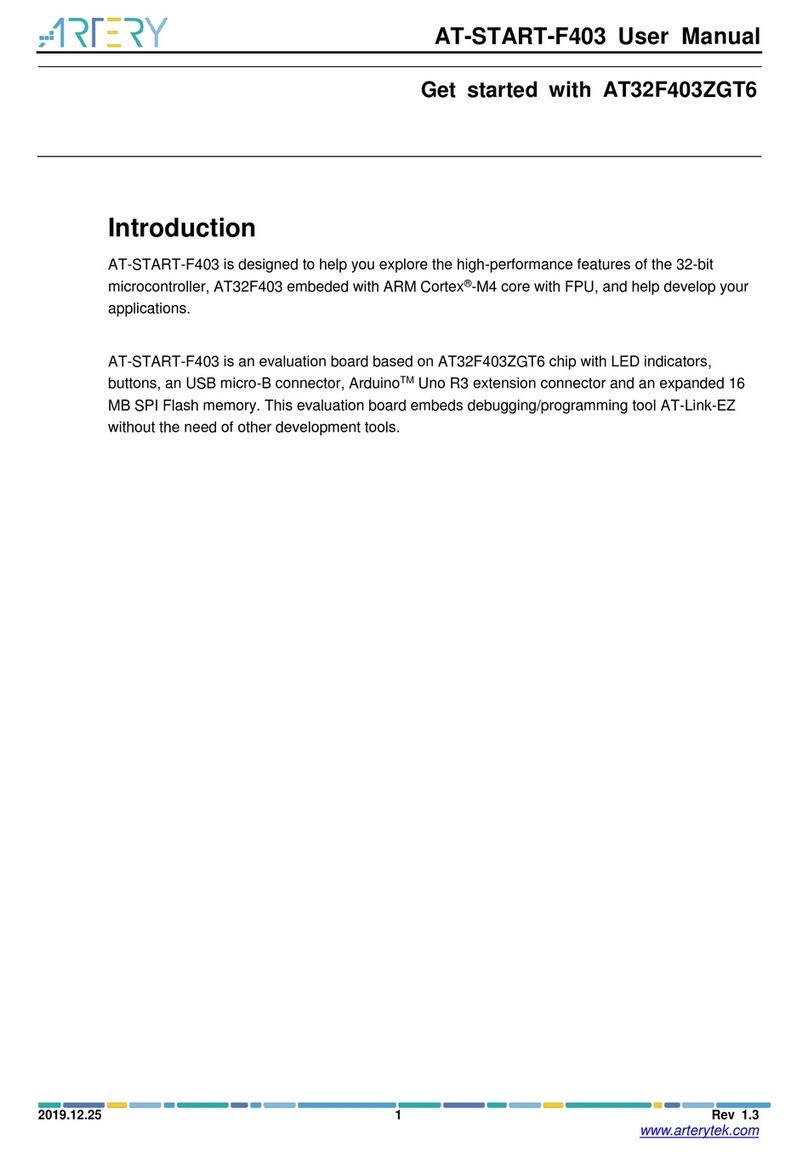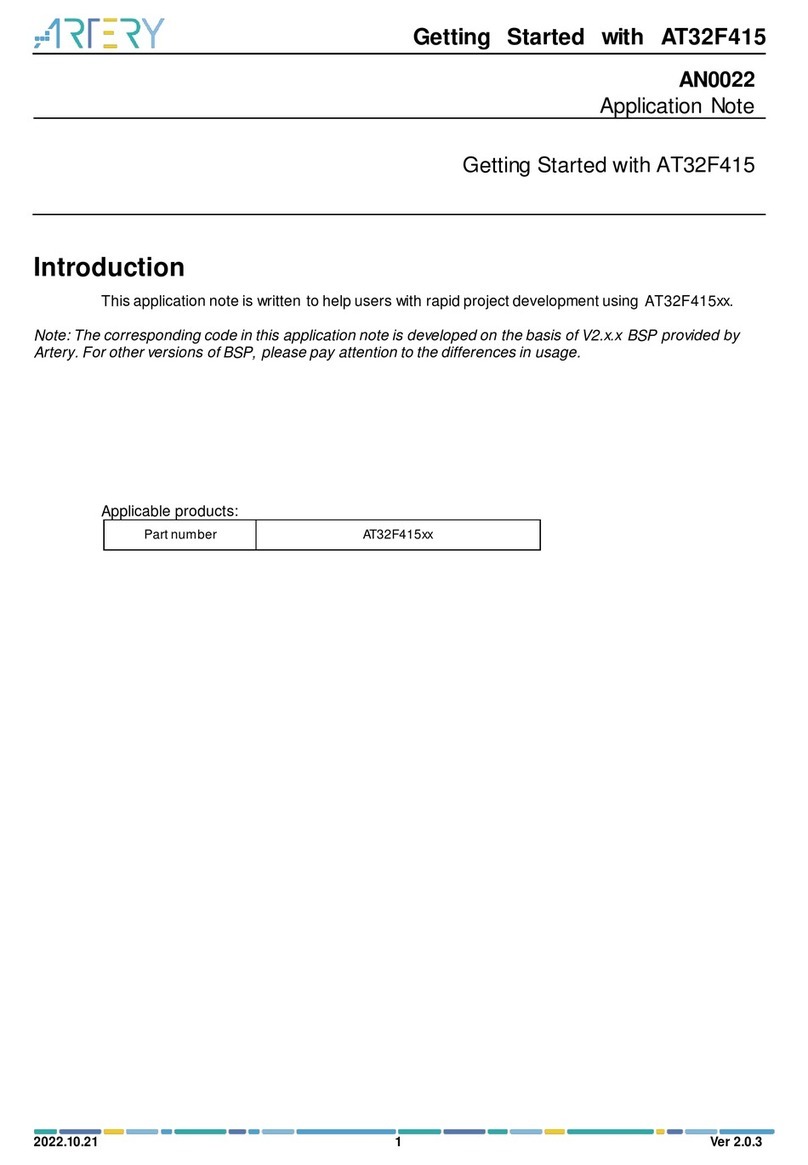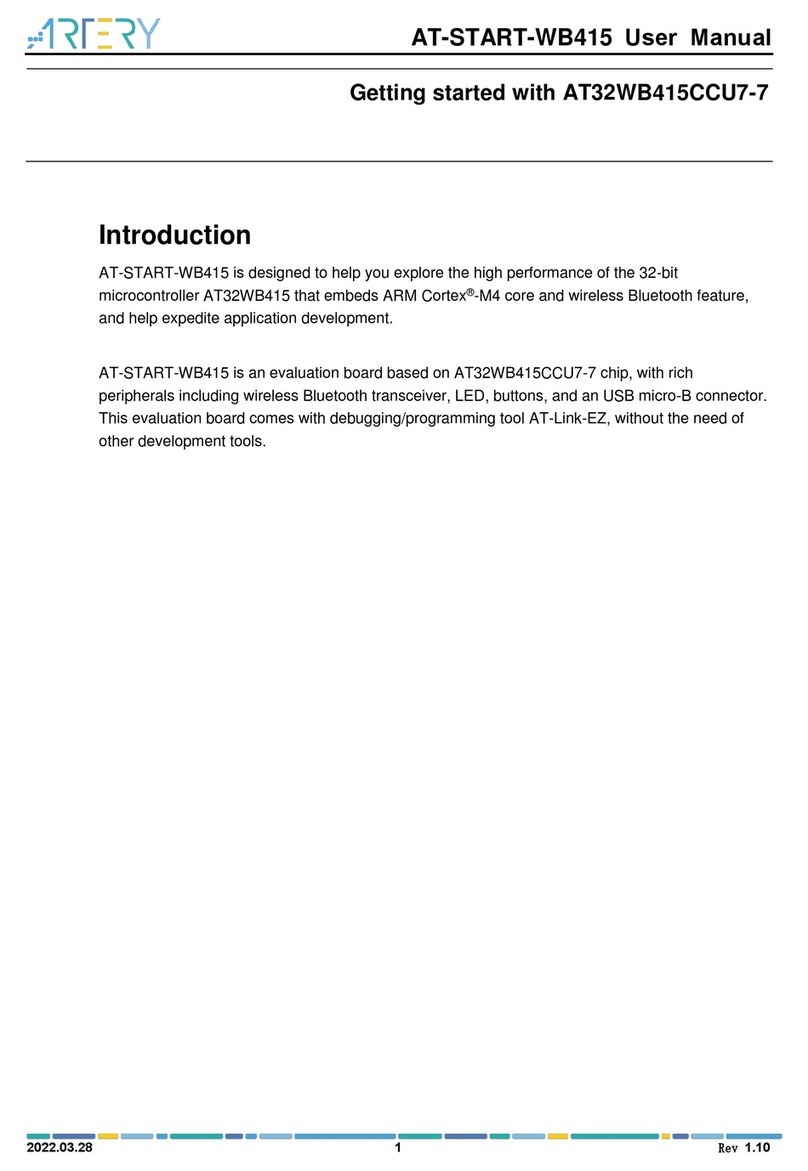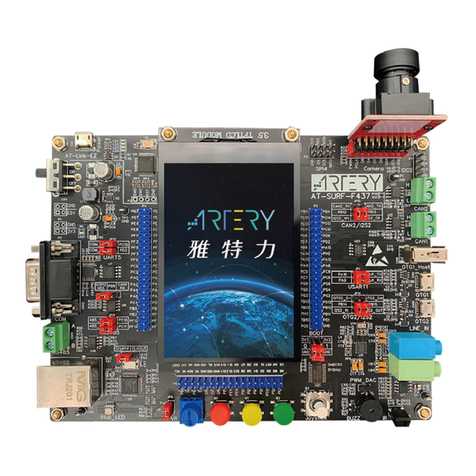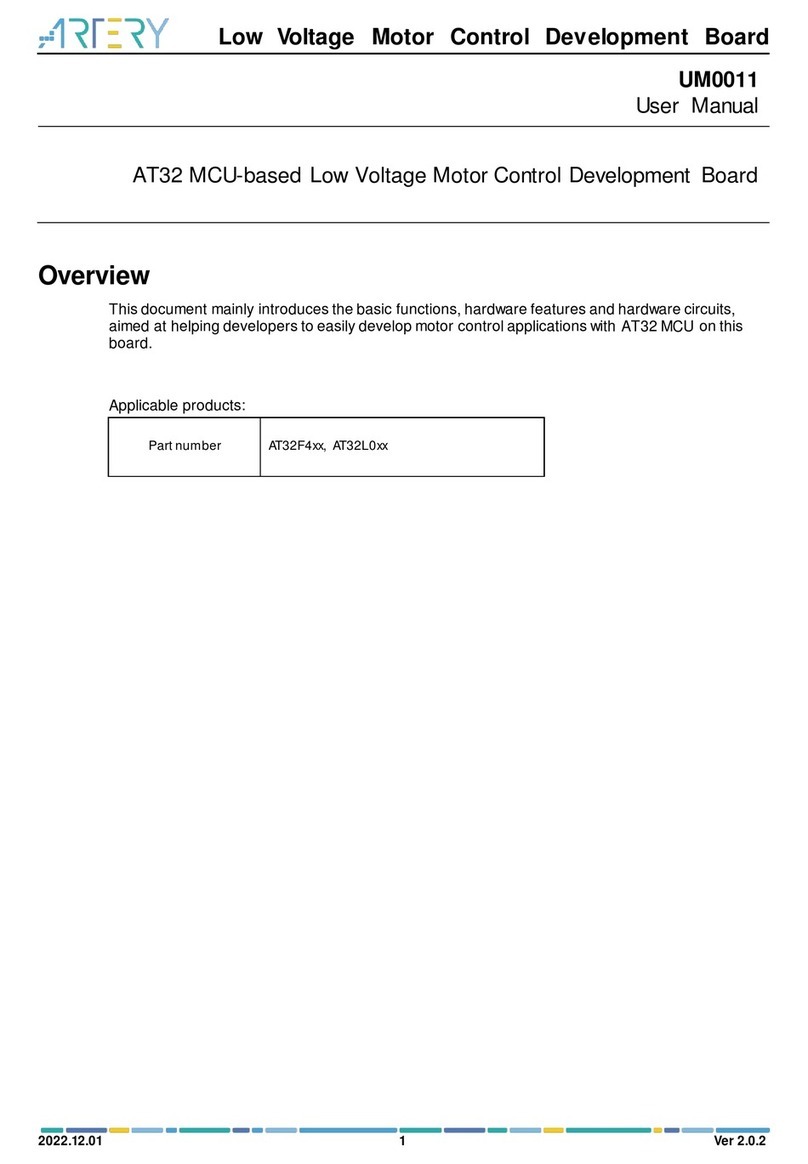
AT-START-F407 User Manual
2020.11.20 2 Rev 1.20
Contents
1Overview................................................................................................................. 5
1.1 Features................................................................................................................... 5
1.2 Definition of terms .................................................................................................... 5
2Quick start.............................................................................................................. 6
2.1 Get started................................................................................................................6
2.2 Toolchains supporting AT-START-F407 ....................................................................6
3Hardware and layout ............................................................................................. 7
3.1 Power supply selection............................................................................................. 9
3.2 IDD........................................................................................................................... 9
3.3 Programming and debugging .................................................................................10
3.3.1 Embedded AT-Link-EZ...............................................................................................10
3.3.2 20-pin ARM® standardJTAG connector.....................................................................10
3.4 Boot mode selection................................................................................................11
3.5 External clock source ..............................................................................................11
3.5.1 HSE clock source.......................................................................................................11
3.5.2 LSE clock source........................................................................................................11
3.6 LED indicators........................................................................................................ 12
3.7 Buttons...................................................................................................................12
3.8 USB device.............................................................................................................12
3.9 Connect to Bank3 of Flash memory via SPIM interface.......................................... 12
3.10 Ethernet.................................................................................................................. 13
3.11 0 Ω resistors ...........................................................................................................14
3.12 Extension connectors............................................................................................. 15
3.12.1 ArduinoTM Uno R3 extension connector.....................................................................15
3.12.2 LQFP100 I/O extension connector.............................................................................16
4Schematic............................................................................................................. 17
5Revision history................................................................................................... 22
